Chicago has undoubtedly become one of the culinary epicenters of the world. The city’s location in the middle of the country and its diverse communities make it easy to find memorable bites in every neighborhood. The city’s culinary prowess took root at the end of the nineteenth century when Chicago was at the forefront of the nation’s agricultural revolution as both the “Hog Butcher for the World” and a major transportation hub.
The 1893 World’s Columbian Exposition (WCE) opened Chicago’s doors to millions and allowed the US to show off what it had to offer. While replete with memorable architecture and technological innovations, the many culinary offerings throughout the White City and the Midway Plaisance enticed and enchanted the palates of all those who came through the fair. We can thank the WCE for introducing some of the most well-known foodstuffs enjoyed by generations of consumers worldwide. This list is by no means exhaustive. We welcome you to share your favorite culinary legacies from the WCE in the comments!
Vienna Beef
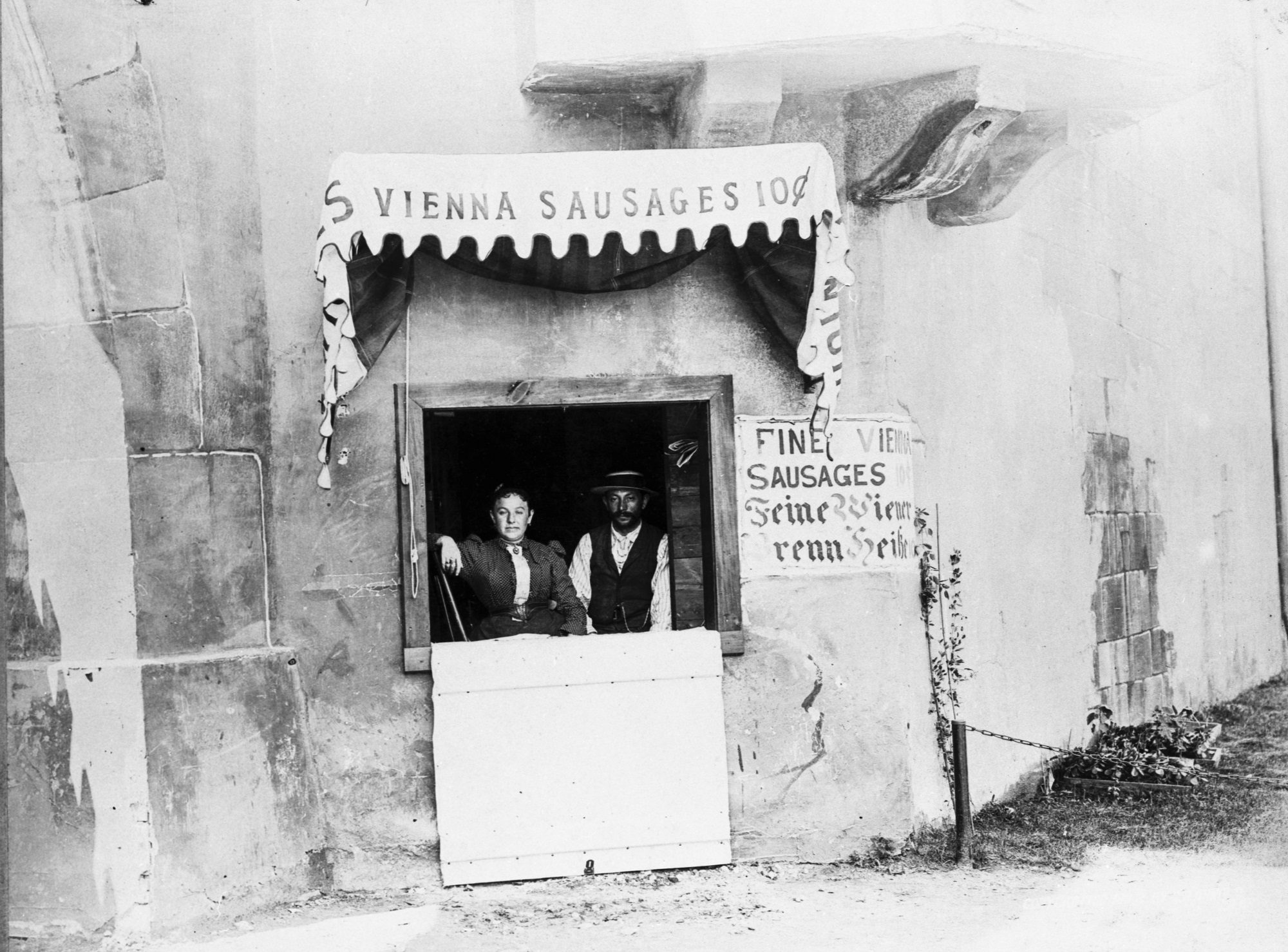
Vienna Sausage Place in the Austrian Village at the World’s Columbian Exposition, Chicago, 1893. CHM, ICHi-002453; C. D. Arnold, photographer
Vienna Beef Inc. is arguably the hot dog king of Chicago. Vienna’s reign began at the 1893 fair with two entrepreneurial brothers-in-law, Emil Reichel and Samuel Ladany. The pair of entrepreneurs set up shop in “Old Vienna,” an exhibit that was part of the Midway Plaisance, where they charged a dime for their sausages topped with onions and mustard. Popular due to their distinct flavor, accessible price, and heartiness, Reichel and Ladany stayed in the city and set up shop on Halsted Street, opening a store and factory that became the Chicago legend known the world over today. The most important rule of all—no ketchup.
Aunt Jemima Pancake Mix
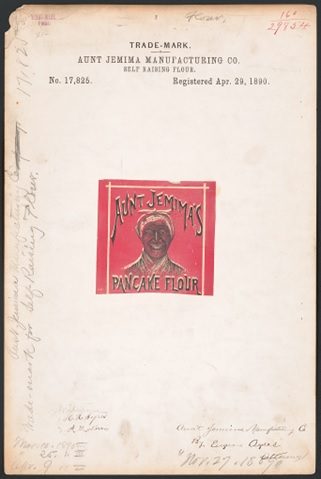
Trademark registration by Aunt Jemima Manufacturing Co. for Aunt Jemima’s Pancake Flour brand Self Raising Flour, LC-DIG-trmk-1t17825, Library of Congress Prints and Photographs Division
While all products branded with Aunt Jemima were renamed to Pearl Milling Co. in June 2021, the boxed pancake mix found in nearly every grocery store in America is one of the more complicated food legacies from the WCE. Aunt Jemima was a formerly enslaved woman from Kentucky named Nancy Green, who was hired to do cooking demonstrations to promote the cake mix. Her demonstrations typically included songs and other performances widely associated with racist mammy caricatures. At the fair in Chicago, thousands saw Green perform, bringing national attention to the product she promoted. Green passed in August 1923 as part of a car crash. She was buried in Oak Woods Cemetery on the city’s South Side. Her grave was unmarked until 2015, when after a decade of research, Green’s remains were finally verified, and a marker for her was installed.
Juicy Fruit Gum
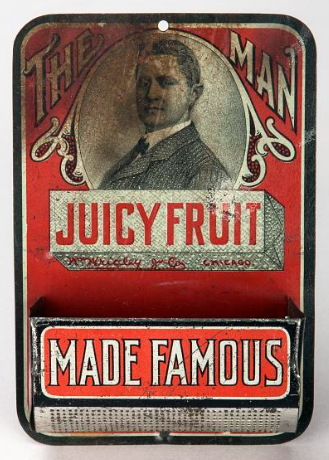
Wm. Wrigley Jr. Company Juicy Fruit gum tin, c. 1893. The tin was designed to hang against a wall or other flat surface, and the gum would be held in the basket on the bottom front of the tin. National Museum of American History, AG.293320.2740.
When William Wrigley Jr. moved from Philadelphia to Chicago in 1891, he was in the soap business. To incentivize purchases, he was known for giving away freebies to those who purchased his products, primarily baking soda and his own brand and flavors of chewing gum. When the WCE opened, he gambled on a new flavor to entice potential customers, an artificially-flavored sweet strip simply named “Juicy Fruit.” As fate would have it, the gum would come to be far more popular than the rest of the products Wrigley was selling, turning him into Chicago’s very own candy magnate. His fortunes would be so significant that he left his footprint on the city’s built environment with the Wrigley Building downtown and, later, through his acquisition of Wrigley Field, home of the Chicago Cubs.
Cream of Wheat
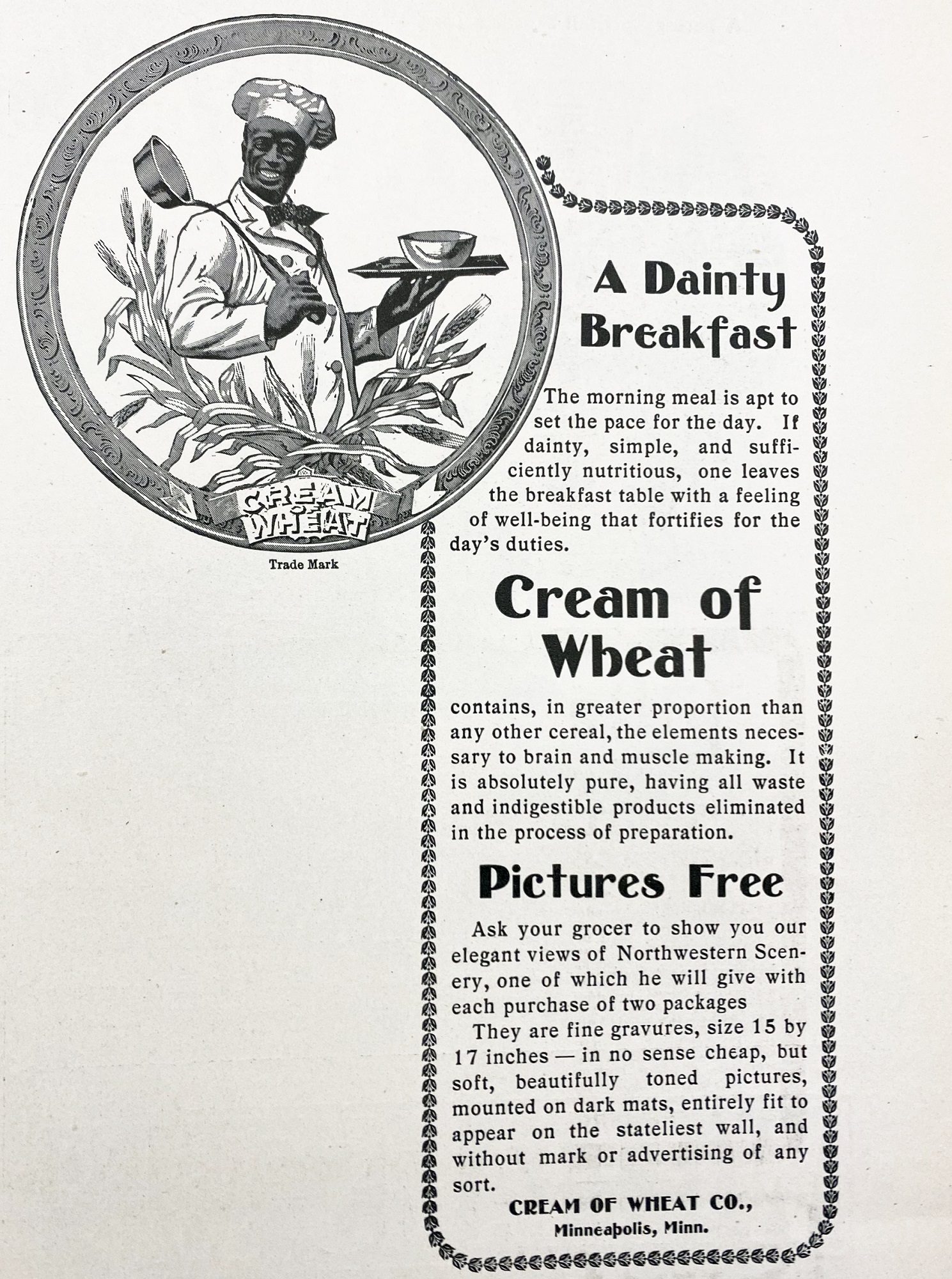
Cream of Wheat advertisement in Harper’s Bazaar, November 18, 1889.
Cream of Wheat, known to many as a breakfast porridge, also debuted at the WCE. While its taste wasn’t the most popular product amongst the culinary critics of the fair, it gained popularity because of how quickly it could be prepared as well as its heartiness. Presented by the Grand Forks Diamond Milling Company out of North Dakota, their straightforward approach was to grind down wheat and make it into farina cereal. After the fanfare in 1893, the proprietors of the mill marketed their creation across women’s magazines and newspapers, which led to national consumption and an eventual listing on the New York Stock Exchange.
Hershey’s Chocolate
While Hershey’s Chocolate didn’t launch at the 1893 world’s fair, the fair was nonetheless integral in the story of America’s most well-known chocolate bar. Before he was a chocolatier, Milton S. Hershey was already a candy entrepreneur, staking his fortunes on selling caramel treats. Like countless other entrepreneurs and curious onlookers, Hershey attended the WCE to catch a glimpse at the future of commerce and manufacturing, and it would be here that his business outlook changed dramatically. After witnessing a demonstration of German chocolate-making equipment, he placed an order and had the equipment shipped back to Pennsylvania and incorporated the Hershey Chocolate Company in 1894.
Finally, for those of you looking to bring the taste of the 1893 World’s Columbian Exposition to your kitchen table, there exists a souvenir cookbook with more than 2,000 recipes “contributed by over two-hundred world’s fair lady managers, wives, of governors, and other ladies of position and influence.” The entire text has been digitized and can be accessed for free via HathiTrust.
Additional Resources
- To experience what a day at the fair would be like through virtual reality, visit the Chicago00 Project’s tour of the 1893 World’s Columbian Exposition
- Get a glimpse into the past with our historical menu collection through Touring Chicago’s Culinary History, a Google Arts & Culture story
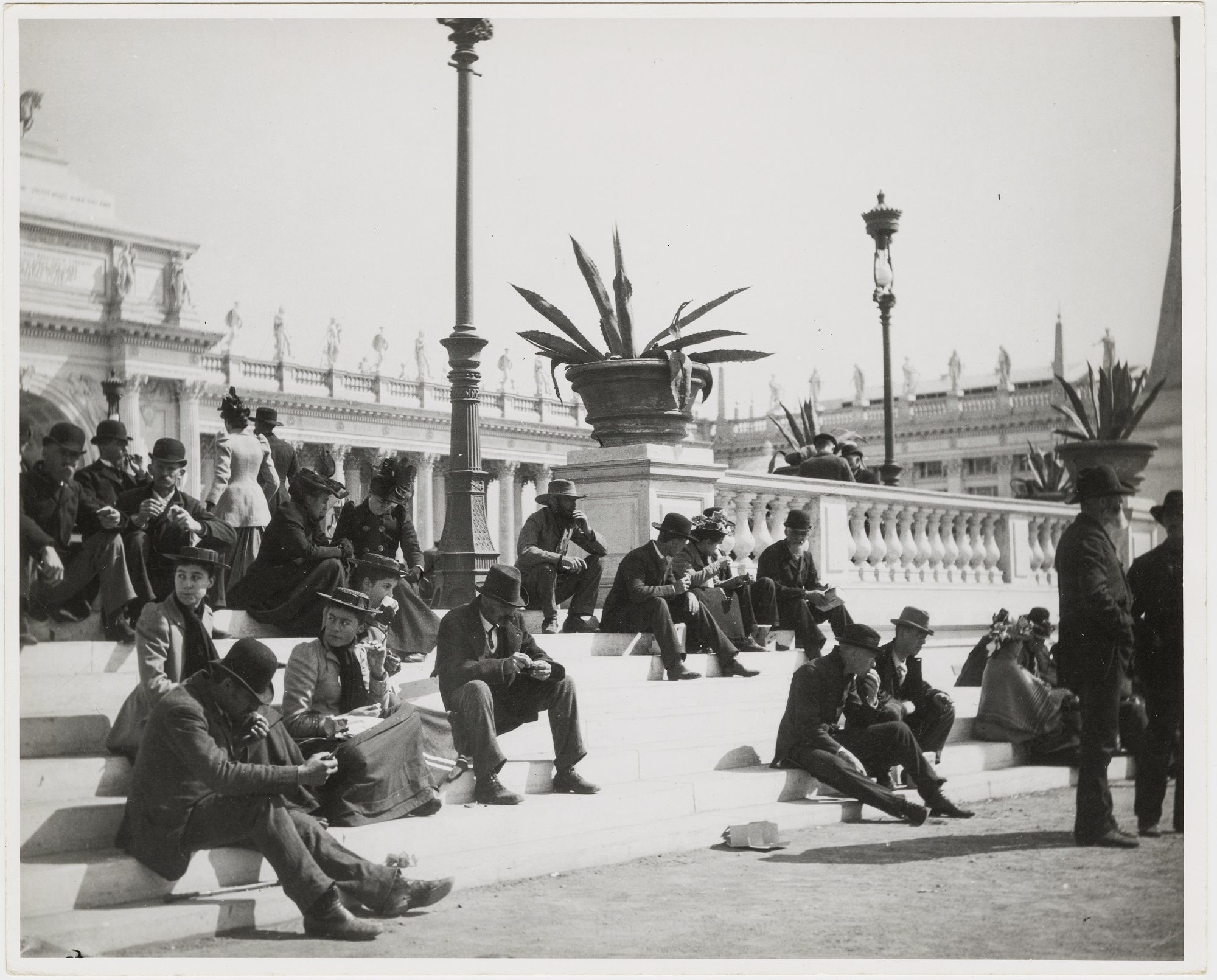
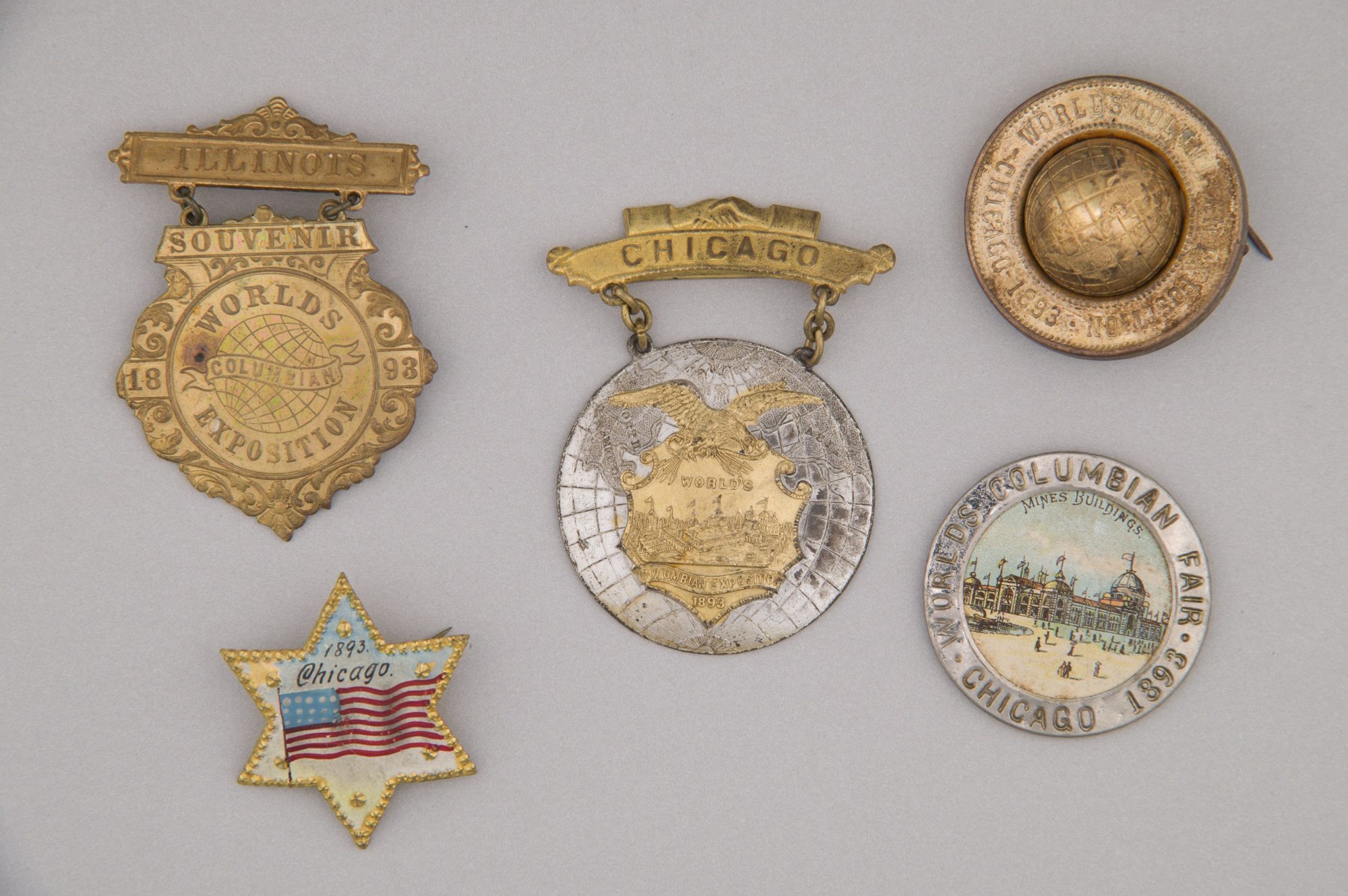
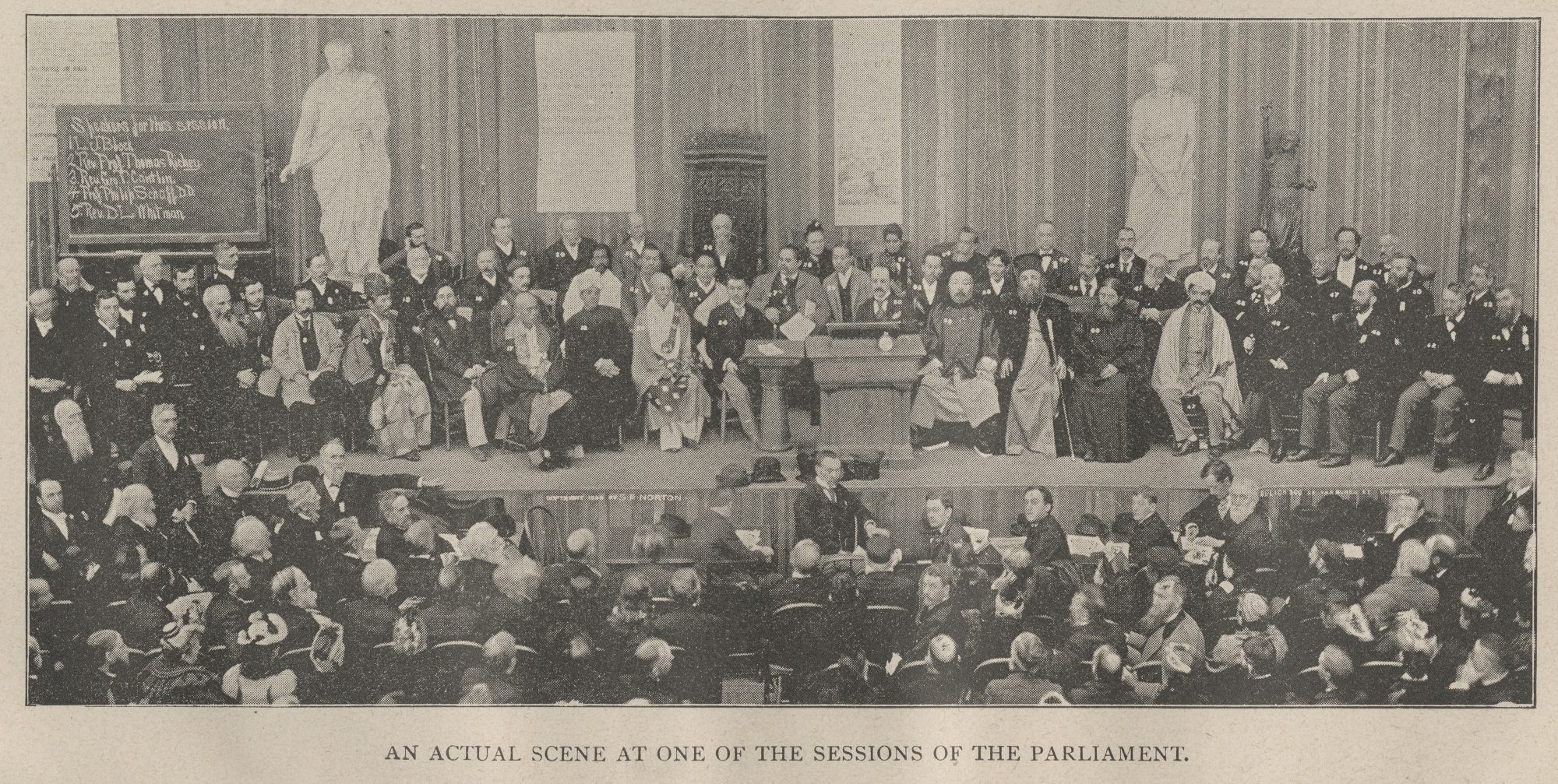
Join the Discussion